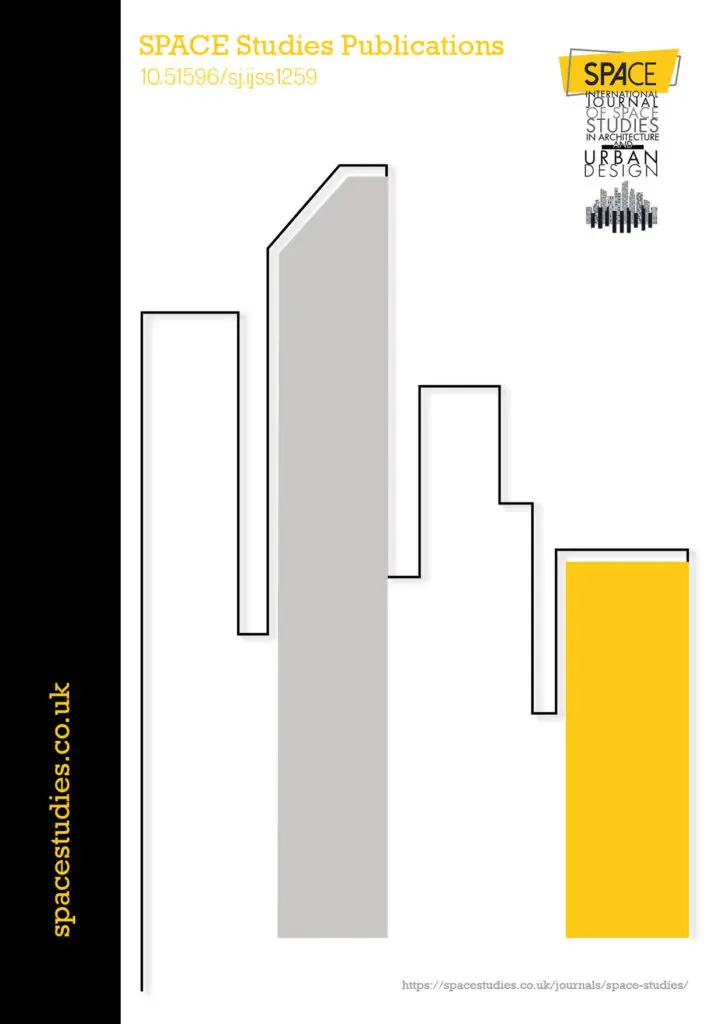
In the context of real estate, the land is considered as the base element which can be further developed into a sale product and offered in the market at certain value. The word ‘value’ in the real estate market can change quite easily, likewise with land values. Land value has many determinants, with one of the most influencing factors is location. A city is a place for humans to do activities that are always changing and developing. Any changes that occur in the urban structure will definitively affect all the elements in it, including environmental and surrounding conditions. The development of a city is strongly influenced by urban economic activities in which they have the power to change the urban structure spatially, one of which is the development of urban clusters. This study will discuss/examine the previous literature in-depth on how a land value can vary, what factors and proxies are known to affect land value, and look for their relationship to changes/developments in urban conditions.
£450.00 per Year.
Access to conference registration
Access to Journal subscription
£380.00 per Year.
Access to conference registration. Proof of student eligibility required.
Access to Journal subscription.
£410.00 per Year.
Discounts on conference registrations, SPACE shop and e-journals. Access to members only areas on the website.
Access to Journal subscription.
£400.00 per Year.
Student priced discounts on conference registrations, SPACE shop and e-journals. Access to members only areas on the website. Proof of student eligibility required.
Access to Journal subscription.
Acknowledgements
The authors wish to express their heartfelt appreciation for the grant received from Indonesia Ministry of Higher Education (RISTEK-BRIN) No: NKB-0207/UN2.RST/HKP.05.00/2021. The authors retain responsibility for the paper’s content.
Conflict of Interests
There are no conflicts of interest declared by the authors.
References
Astuti, A., Subiyanto, S., & Haniah, H. (2015). Analisis Pengaruh Perubahan Nilai Jual Tanah Terhadap Zona Nilai Tanah (Impact of land selling prices to regulated land value). Jurnal Geodesi Undip, 4(1), 72-84.
Bhargava, A. (2013). Determinants of property values, Jaipur city. International Journal of Scientific and Research Publications, 3(9), 1-15.
Bowes, D. R., & Ihlanfeldt, K. R. (2001). Identifying the impacts of rail transit stations on residential property values. Journal of Urban Economics, 50(1), 1-25.
Cervero, R., & Duncan, M. (2004). Neighbourhood composition and residential land prices: does exclusion raise or lower values? Urban Studies, 41(2), 299-315.
Choe, K. A., & Laquian, A. A. (2008). City cluster development: toward an urban-led development strategy for Asia. Asian Development Bank.
Clapp, J. M. (1980). The intra-metropolitan location of office activities. Journal of Regional Science, 387-399.
Cui, G. (1992). Study on China’s Urban and Township Development. Beijing: Chinese Construction Industry Press.
Dale, F. P., & McLaughlin, J. D. (1999). Formalizing Property Rights.
Dong, L. (1989). Initial Thoughts of China’s Urbanization. Beijing: Chinese Construction Industry Press.
Eckert, J.K, 1990, Property Appraisal and Assessment Administration, IAAO, Chicago Illinois. p. 151-180.
Eldred, G. W. (1987). Real estate: Analysis and strategy. HarperCollins Publishers.
Emo, F. I., Oni, A. O., & Egolum, C. C. (2013). Prioritizing residential land value determinants in Onitsha, Nigeria. International journal of academic research in business and social sciences, 3(3), 201-213.
Fahira, F., Basong, A., & Tagala, H. H. (2010). Identifikasi faktor yang mempengaruhi nilai jual lahan dan bangunan pada perumahan tipe sederhana (Identifying the factors that influence the sale price of land and buildings in simple housing). Jurnal SMARTek, 8(4), 251-269.
Fang, C., & Guan, X. (2011). Input-output analysis of China’s urban agglomeration. Acta Geographica Sinica, 66(8), 1011-1022.
Fang, C., & Mao, Q. (2015). New Exploration of Selecting and Nurturing China’s Urban Agglomerations. Beijing: Science Press.
Fang, C., & Yu, D. (2017). Urban agglomeration: An evolving concept of an emerging phenomenon. Landscape and urban planning, 162, 126-136.
Fang, C., Song, J., & Lin, X. (2010). Theories and Practices of China’s Urban Agglomeration Sustainable Development. Beijing: Science Press.
Hartshorn, T. A. (1992). Interpreting the City: An Urban Geography. NY: John Wiley & Sons Inc.
Hough, D. E., & Kratz, C. G. (1983). Can “good” architecture meet the market test? Journal of Urban Economics, 14(1), 40-54.
INSEE. (2020, February 19). Definition – Urban cluster: INSEE. Retrieved March 29, 2021, from https://www.insee.fr/en/metadonnees/definition/c1411
Mommaas, H. (2004). Cultural clusters and the post-industrial city: Towards the remapping of urban cultural policy. Urban Studies, 41(3), 507-532.
Nurzukhrufa, A., Setijanti, P., & Dinapradipta, A. (2019). Kepuasan Penyewa terhadap Faktor-Faktor Pemilihan Kantor Sewa Kelas A Fungsi Majemuk di Surabaya. Jurnal Arsitektur ARCADE, 3(3), 237-242.
O’Sullivan, A. (2007). Urban Economics, 225-226. Boston, MA: McGraw-Hill/Irwin.
Prasetya, N. A., & Sunaryo, P. B. (2012). Faktor-faktor yang mempengaruhi harga lahan di kawasan Banjarsari Kelurahan Tembalang, Semarang (Factors Influencing Land Prices in Semarang’s Banjarsati District, Tembalang Village). Teknik PWK (Perencanaan Wilayah Kota), 2(2), 223-232.
Porter, M. E. (2011). Competitive Advantage of Nations: Creating and Sustaining Superior Performance. NY: Free Press.
Razali, M. N., & Adnan, Y. M. (2015). Sustainable property development by Malaysian property companies. Property Management, 33(5), 451-477.
Rymarzak, M., & Siemińska, E. (2012). Factors affecting the location of real estate. Journal of Corporate Real Estate, 14(4), 214-225.
Stryjakiewicz, T. (1988). Factors of the location and functioning of the agri-food industry and its spatial structure in the Poznań region (No. 36). Wydawn. Nauk. Uniwersytetu im. Adama Mickiewicza w Poznaniu.
Sutawijaya, A. (2004). Analisis Faktor-Faktor yang Mempengaruhi Nilai Tanah sebagai Dasar Penilaian Niali Jual Obyek Pajak (NJOP) PBB di Kota Semarang (Analysis of Land Value Factors as a Basis for Determining the Sale Value of Land and Building Tax Objects in Semarang). Economic Journal of Emerging Markets, 9(1).
Swinney, P. (2017, August 2). What is a cluster? Retrieved March 29, 2021, from https://www.centreforcities.org/reader/encourage-innovation-clusters/takeaway/
Wheaton, W. C. (1987). The cyclic behavior of the national office market. Real Estate Economics, 15(4), 281-299.
Wolcott, R. C. (1987). The Appraisal of Real Estate. American Institute of Real Estate Appraisers.
Enter your email and we’ll send you more information about all activities and membership.

28-29 November 2024
Registered address: 151 West Green Road, N15 5EA, London, UK
Mails to: 23A Alwold Crescent,
SE12 9AF, London, UK
+44 2037242458
+44 7780014146
space@spacestudies.co.uk
architecturalspacestudies@gmail.com
Sign in to continue
Not a member yet? Sign up now